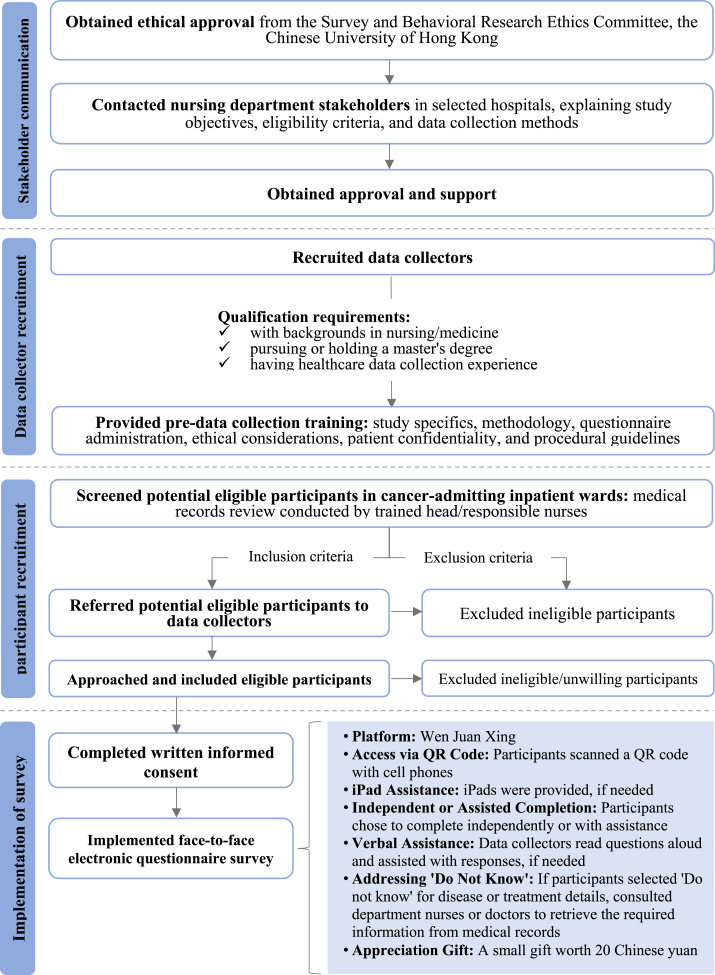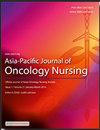中国不同经济省份癌症相关金融毒性差异:一项多中心横断面研究
IF 2.8
3区 医学
Q1 NURSING
引用次数: 0
摘要
目的:中国各地区不同的经济格局可能导致癌症相关金融毒性(FT)的差异,但缺乏经验证据。本研究考察了中国不同经济省份癌症相关金融服务的地区差异。方法:对来自中国三个省份不同经济状况(高、中、低收入)的六所三级医院和六所二级医院的成年癌症患者进行横断面研究。FT采用金融毒性综合评分(COST)进行评估。在控制13个患者层面的社会人口学和临床危险因素的情况下,采用层次回归分析比较不同经济区域参与者的FT。结果:2022年2月至10月,共1208人完成调查,回复率为97.3%。平均COST得分分别为21.99±6.37(高收入)、20.38±8.01(中等收入)和19.20±5.14(低收入),存在显著差异(P)。结论:本研究揭示了中国不同经济省份癌症相关FT的显著差异。研究结果强调需要有针对性的政策和干预措施,以改善癌症治疗中的卫生公平性,重点是不要忽视中等收入地区。肿瘤科护士应提高对FT管理的认识,表达患者的需求,并倡导政策改革以解决这些差异。本文章由计算机程序翻译,如有差异,请以英文原文为准。

Disparities in cancer-related financial toxicity across economically diverse provinces in China: A multi-center cross-sectional study
Objective
China’s diverse economic landscape across its regions may contribute to disparities in cancer-related financial toxicity (FT), but empirical evidence is lacking. This study examined regional disparities in cancer-related FT across economically diverse provinces in China.
Methods
A cross-sectional study was conducted among adult patients with cancer from six tertiary and six secondary hospitals across three Chinese provinces with varying economic statuses (high-, middle-, and low-income). FT was assessed using the COmprehensive Score for financial Toxicity (COST). Hierarchical regression analysis was employed to compare FT among participants from different economic regions, controlling for 13 patient-level sociodemographic and clinical risk factors.
Results
From February to October 2022, 1208 participants completed the survey (response rate = 97.3%). Mean COST scores were 21.99 ± 6.37 (high-income), 20.38 ± 8.01 (middle-income), and 19.20 ± 5.14 (low-income), showing significant differences (P < 0.001), with lower scores indicating more severe FT. After adjusting for covariates, regional economic level was significantly associated with FT, with more severe FT in middle- (B: −1.515; 95% CI: −2.250, −0.780) and low-income regions (B: −2.159; 95% CI: −2.899, −1.418) than in high-income regions.
Conclusions
This study reveals significant disparities in cancer-related FT across economically diverse provinces in China. The findings underscore the need for targeted policies and interventions to improve health equity in cancer care, with a focus on not neglecting middle-income regions. Oncology nurses are expected to enhance awareness of FT management, voice the needs of patients, and advocate for policy reforms to address these disparities.
求助全文
通过发布文献求助,成功后即可免费获取论文全文。
去求助
来源期刊

Asia-Pacific Journal of Oncology Nursing
Multiple-
CiteScore
2.80
自引率
11.10%
发文量
136
审稿时长
31 days
 求助内容:
求助内容: 应助结果提醒方式:
应助结果提醒方式:


